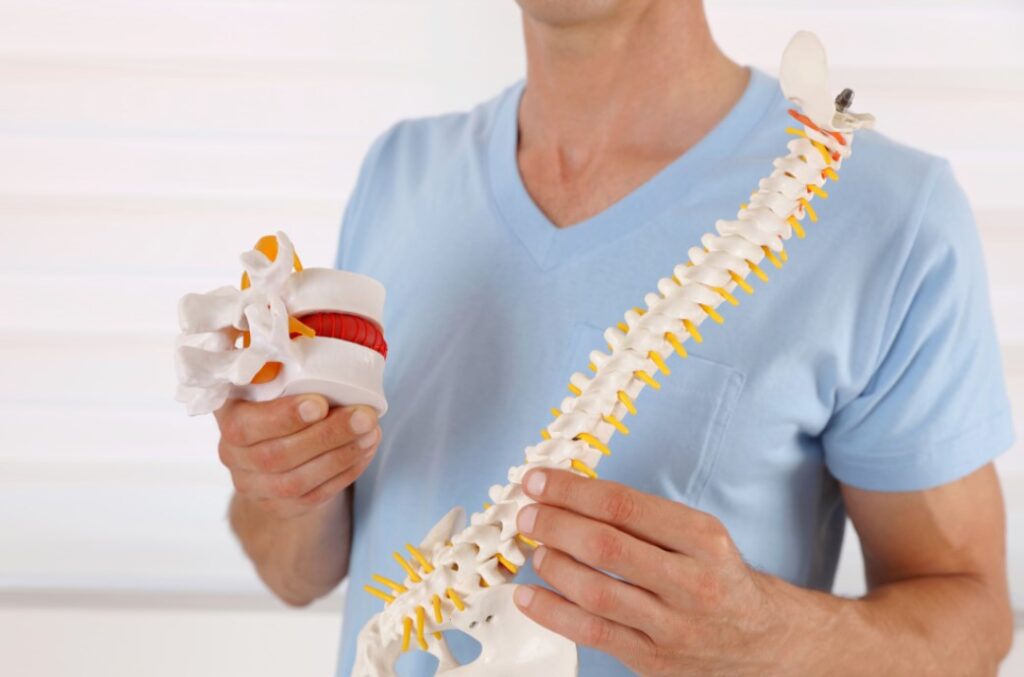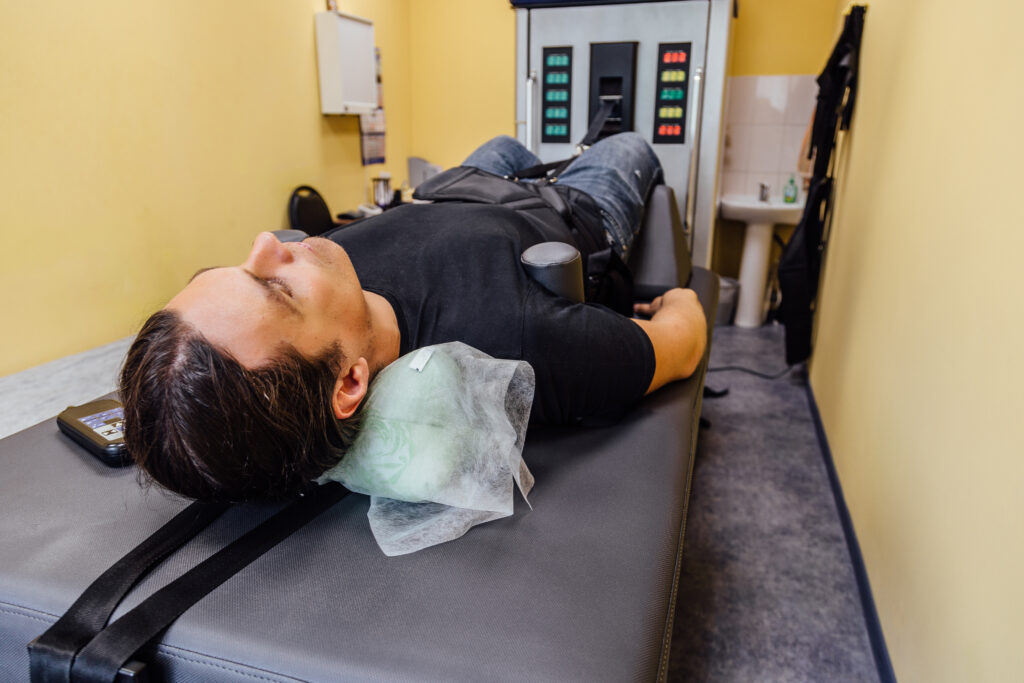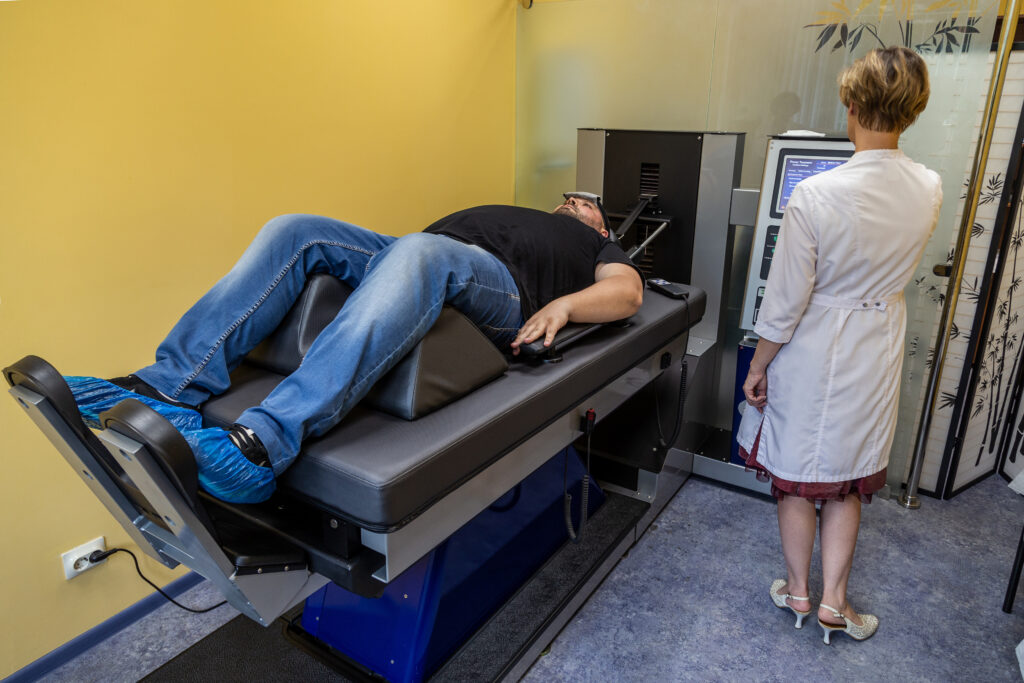
There are two forms of Spinal Decompression. Surgical and non-surgical, but let’s steer away from any surgical procedures that may leave you bedridden for weeks, and focus more on the non surgical Spinal Decompression which can bring relief to patients without the need of invasive surgeries and long recovery times.
You may have some questions about how the procedure is done. You may also be wondering about what causes spinal compression. Today we’ll be going over some of those questions, and why you should consider non-surgical Spinal Decompression before attempting surgery. Join us as we give you an overview on how and why non-surgical Spinal Decompression is done.
What Causes Spinal Compression?
Spinal compression can be caused by a number of conditions and is caused when excess pressure is put on the spinal cord. Compression can occur through the back, bother cervical spine (neck) and lumbar spine (lower back). Naturally wear and tear of the bones of the spine is the most common cause of spinal compression. Usually you’ll begin to see this develop after 50 years old. The other conditions that can cause compression include:
- Scoliosis
- Injury
- Tumor
- Arthritis
- Infection
- Diseases
- Posture
Depending on the location and cause of the compression, the symptoms can vary. They can develop suddenly with no warning, or gradually. In severe cases however, emergency surgery may be necessary.
Spinal Compression Symptoms
As mentioned previously symptoms have no pattern of when they occur. Being vigilant about symptoms can lead to swift treatment and quicker recoveries. Some of the symptoms are:
- Trouble with Coordination
- Loss of sensation in the feet
- Numbness
- Cramping
- Weakness in Limbs (arms, hands, legs)
- Burning pain in arms, thighs, or legs
- Stiffness in Neck, and Back
- Pain in Neck, and Back
Symptoms that would require immediate medical attention include loss of control of bowels or bladder. Severe pain and weakness spreading to your leg or both legs causing difficulty walking or standing and extreme numbness between legs, and inner thighs. As these symptoms are known as Cauda Equina Syndrome.
How is the Decompression Done?
Spinal Decompression is when you slowly and gently pull at either side of the spine in order to release any pressure that may have been built up within the spine. At SOHMA of Long Beach we perform non-surgical Spinal Decompression by securing the patient to a specialized decompression table called a spinal traction. You are fitted with a harness to hold your abdomen and your pelvis. The spinal traction is the ability to stretch and relax intermittently to achieve the right amount of tension for desirable results. When the spine is being decompressed, vertebrae can naturally reposition to their original state.
The procedure lasts around 30 to 45 minutes, compared to spinal surgery that can take weeks or months to heal. Depending on the severity of the case, some patients may need over 20 decompression sessions. Though you feel more flexible, and notice significantly less pain in your neck and back.
Other benefits you may notice from non-surgical Spinal Decompression include increased spinal mobility, improved balance which can help prevent new injuries and reduced stress level as some of the pressure has quite literally been lifted.
With non-surgical Spinal Decompression most patients don’t notice or experience major side effects. Most common side effects have been reported to cause a dull soreness for the first few days as the body becomes used to being decompressed.
Take the Next Step In Improving Your Health by Contacting SOHMA Integrative Medicine
Our goal is to help you improve your health. You can reach out to us and ask us about the Myers Cocktail, IV Therapy, Chiropractic care, or how our other health service lines can help you with your journey to improved health.
Located in Long Beach, CA we help individuals from the surrounding cities.
We look forward to helping you take the next step in your journey to better health


